Objective C: Communicating in response to spoken and/or written and/or visual text
Objective D: Using language in spoken and/or written form
According to the MYP language acquisition guide (2014):
|
Objective C:
In the language acquisition classroom, students will have opportunities to develop their communication skills by interacting on a range of topics of personal, local and global interest and significance, and responding to spoken, written and visual text in the target language. |
Objective D:
This objective relates to the correct and appropriate use of the spoken and written target language. It involves recognizing and using language suitable to the audience and purpose, for example, the language used at home, the language of the classroom, formal and informal exchanges, social and academic language. When speaking and writing in the target language, students apply their understanding of linguistic and literary concepts to develop a variety of structures, strategies (spelling, grammar, plot, character, punctuation, voice) and techniques with increasing skill and effectiveness. |
Here is my understanding of criteria C and D:
Notes:
- Criteria C and D should be used together for evaluating a writing or an interactive oral task.
- Students use their listening, reading or viewing skill to understand the prompt and make responses, by using appropriate and correct language.
- The prompt or stimulus might be spoken or written or visual, depending on the theme and context of the unit. (Further guidance for MYP language, 2014)
- The prompt or stimulus might be as simple as some questions from the teacher, a proverb, a picture with a title or any documentary or newspaper report, may be thought-provoking. (Further guidance for MYP language, 2014)
- A balanced approach should be considered when designing writing and oral tasks throughout the year. There should be equal opportunites for students to practice and perform writing and speaking skills.
- Use language acquisition continuum (MYP language acquisition guide, 2014, page 28-35) as a resource for developing a scope of sequence of speaking and listening as well as writing skills.
- Text types and structures as well as purposes for writing should be explicitly taught. I strongly recommended using R.A.F.T (Role, Audience, Format, Topic) strategy to help students to write and speak in a context.
- Refer to "Character and non-Roman alphabetical languages" (MYP language acquisition guide, 2014, page 45) for word-character equivalency suggested for length of writing tasks.
Objective C and D for specific phases
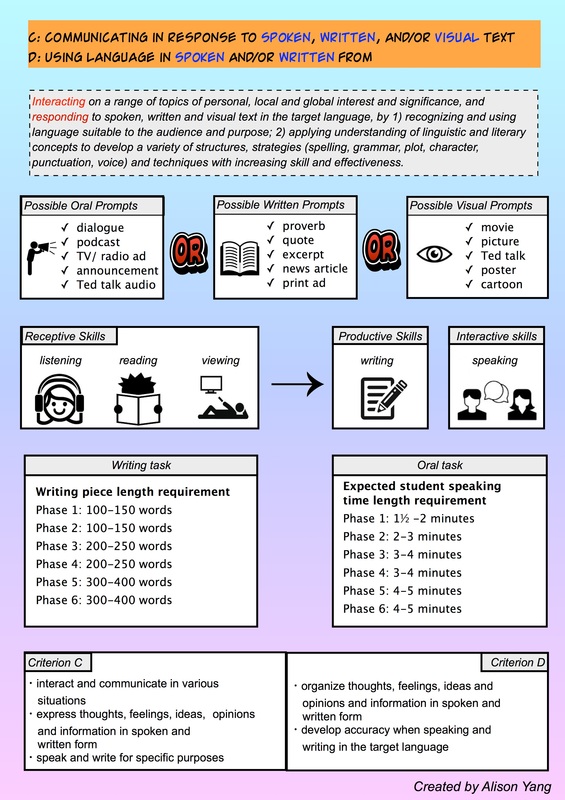
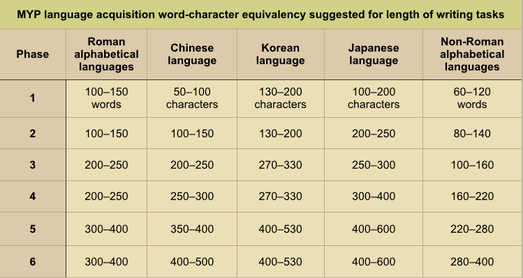
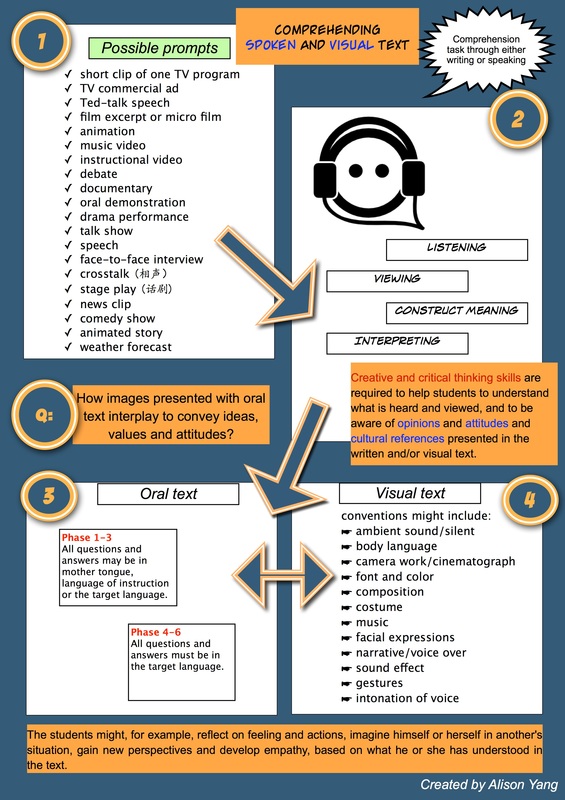
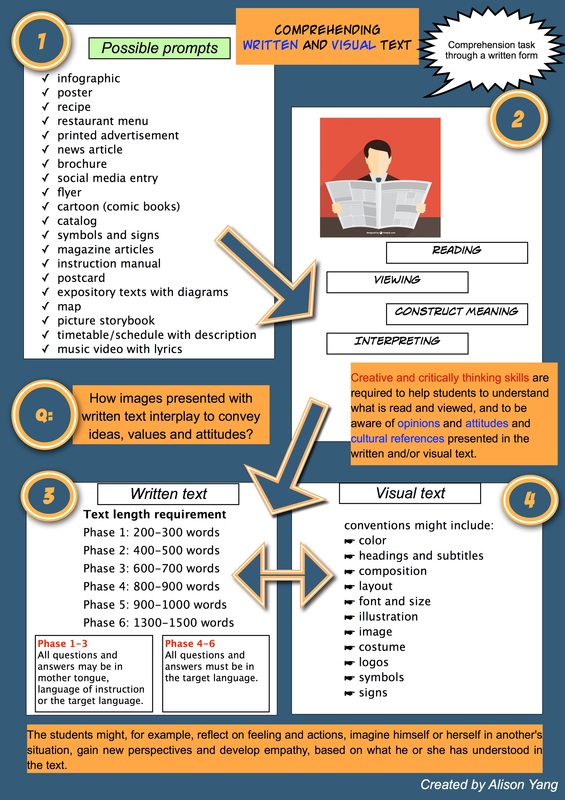
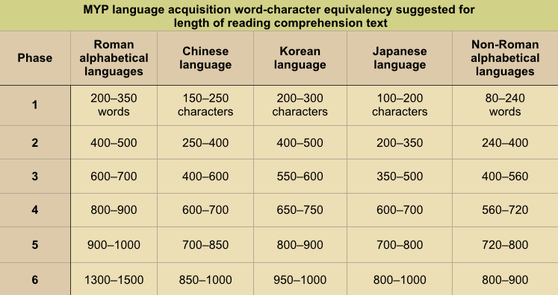
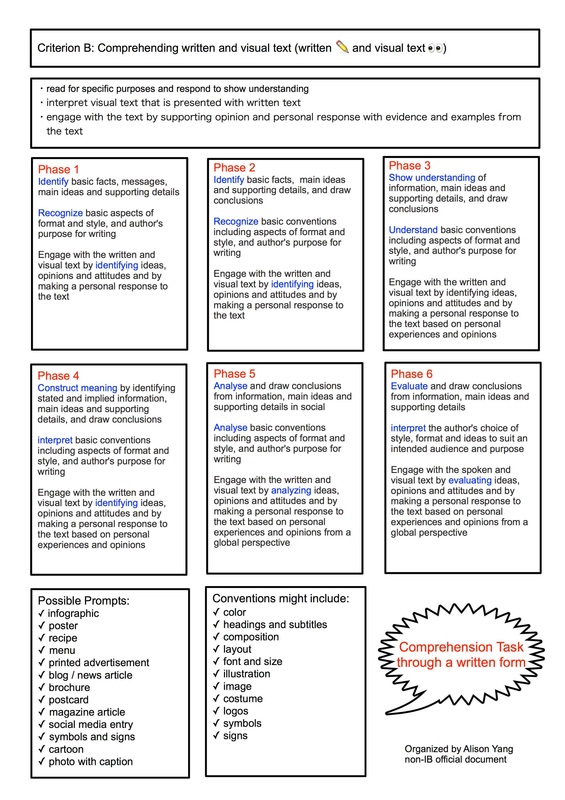

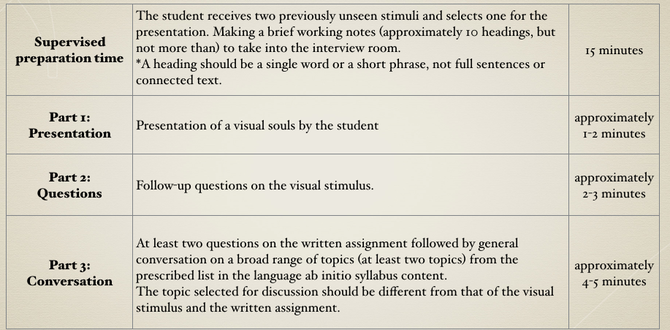
 RSS Feed
RSS Feed